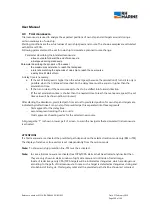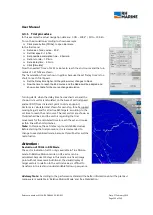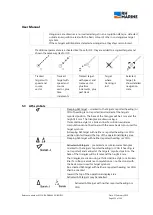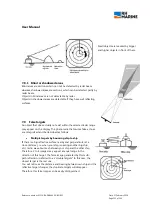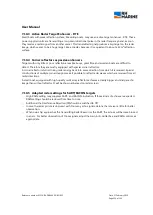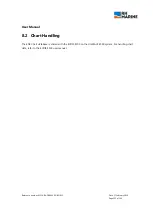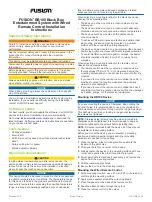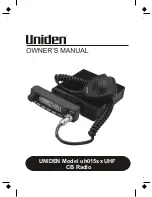
User Manual
Reference number: 4111A-RADAR4600-GBD-R1.1
Date: 27 February 2018
Page 122 of 149
7.6
Target discrimination in relation to beamwidth
Separation of two side by side positioned targets
depends on the horizontal beam width of radar
transmitting pulse and the distance between radar
antenna and targets.
Distance between the targets must be bigger than the
pulse beam width at same distance from antenna.
The upper example shows two separated targets on radar
image due to the fact, that the radar beam is smaller than
the distance between the regarding vessels.
In downside example the distance between both vessels
is less than the impulse beam width. Therefore both
targets are merged in radar image.
7.7
Target discrimination in relation to Pulselength
Separation of two one after another positioned
targets depends on the travelling length of
transmitted radar pulse. Distance between the
targets must be bigger than travelling distance of
halve of a pulse length.
The upper example shows two separated targets on
radar image due to the fact, that the distance
between the two targets is longer than 50% of the
travelling distance of pulse length.
In downside example the distance between both
vessels is less than 50% of impulse travelling length.
Therefore both targets are merged in radar image.
7.8
Blind and shadowed target areas
Due to the fact that radar radio wave propagation is like line of sight in nature, the stack mast close to the
antenna or a large ship or mountain can create blind spots for the radar observation. In such cases, they
may completely or partially hide targets and cast a long shadow.
Since the shadow of stack or mast is known at the
time of installation, proper selection of the
antenna location is necessary to reduce the
shadow effect.
Because targets less likely to be seen in this
shadow area than in open sea, extra attention
should be used in shadowed areas.

